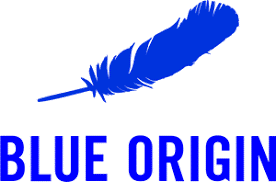Who Should Attend Our Avionics Certification Courses?
ConsuNova’s Avionics Certification Training is specifically designed for aerospace professionals responsible for Avionics system certification, safety, and compliance. Ideal attendees include:
- Avionics Engineers & Developers: Enhance your skills in avionics hardware and software standards such as DO-178C, DO-254, and ARP 4754A/B.
- Systems and Software Managers: Gain deeper insights into regulatory requirements and streamline your certification workflows.
- Quality Assurance and Certification Specialists: Master compliance strategies to ensure successful FAA, EASA, and global regulatory submissions.
- Project Managers: Improve project timelines and reduce risks by gaining expertise in avionics lifecycle compliance processes.
- Compliance and Regulatory Personnel: Stay current with evolving aviation regulations and understand practical certification approaches for advanced Avionics systems.


Preparing for Emerging Aerospace Technologies
The aerospace industry is rapidly evolving, and ConsuNova’s certification training prepares you to meet tomorrow’s certification challenges today. Our courses cover essential updates and guidelines necessary to integrate and certify advanced aerospace technologies:
- Artificial Intelligence (AI) and Machine Learning (ML): Learn how AI-driven systems align with avionics software and hardware certification requirements, including special considerations for DO-178C and DO-254 standards.
- Cybersecurity in Avionics: Gain expertise on incorporating robust cybersecurity measures into Avionics systems in accordance with DO-326A and DO-356A, ensuring regulatory compliance and aircraft safety.
- Urban Air Mobility (UAM) and eVTOL Vehicles: Understand the certification pathways for cutting-edge urban air vehicles, addressing unique system integration challenges aligned with ARP 4754B, ARP 4761, and FAA/EASA regulatory frameworks.
Our forward-looking training approach ensures your team remains proficient, informed, and ahead of industry standards.
The experts you need to secure your aircraft airworthiness

Understand “the big picture”
Acquire a certification solution for any application of Avionics and meet the standards of every design assurance level (DAL-D through DAL-A).

Bring transparency to your project
We show you the most effective and compliant ways to record each project phase so that you ensure your project data is verifiable at every step.

Keep projects up-to-date
Stay current on the guidelines, tech, and tools needed to comply with current aviation standards with expert Certification Specialists.

Put trust in your projects

“ConsuNova provided exceptional support generating requirements and verification criteria for several complex logic devices, using design data as input. They were easy to work with, knowledgeable in the subject area, and performed the highest quality work on schedule.”
Stephen M. | Director of Engineering, Trimble
No more countless contractors


“ConsuNova’s comprehensive Avionics training was simply outstanding. Their DERs were very knowledgeable and provided invaluable perspective on the challenges of using multi-core processors.”
Greg H. | Software Engineer, Blue Origin
The most comprehensive Avionics certification courses and services available
Certification Services
FAA DER Services
EASA CVE Services
Ready to see the power of Avionics Certification Courses?
Fill out the form below and get your Avionics project certified quickly and cost-effectively.


